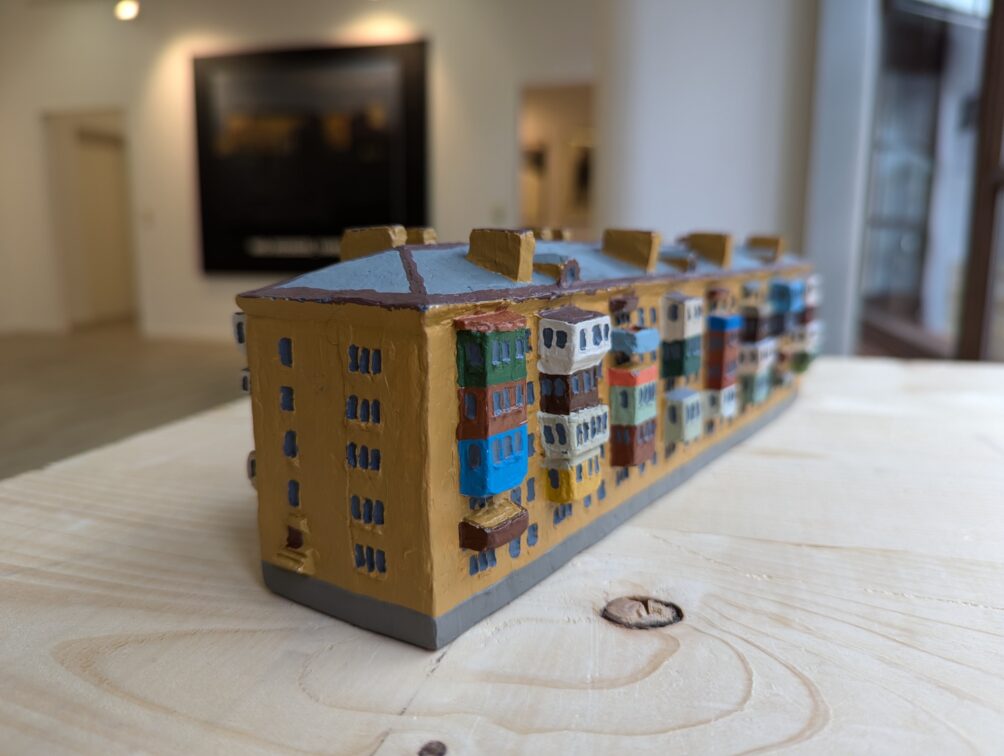The Fractured Tomorrows project focuses on the problem of fragmentation and uncertainty of the future world, which has emerged since the beginning of Russia’s war of aggression against Ukraine. The event includes a panel discussion and an exhibition featuring paintings, objects, and graphics by Ukrainian artists Dmytro Yevsieiev, Mykola Lukin, and Yurii Pikul.
The war in Ukraine has been going on for more than two years, and the consequences of this aggression have affected almost every person in Europe: it has become clear that the integrity of the familiar world has been damaged, and the sense of security and a clear vision of the future have disappeared. This perception of the present feels in the works of artists at the exhibition. They balance on the edge of reality and illusion because the events unfolding before our eyes often seem impossible in a democratic world. None of the authors resorts to documenting the tragedies of war. In their works, they distance themselves from the specific course of events and use the language of painting to recreate the reality of the destroyed world.
Mykola Lukin’s picturesque cosmic landscapes from the series The Landscape after the Storm are an allusion to the destruction of modern warfare in Ukraine. Their surreal aesthetics create the impression of alien landscapes. The shapes of the landscapes are blurred and abstract, but you can guess the wreckage of an airplane and the outlines of an industrial city. In the works – Reading at Night and Home of a Salamander – a sense of threat and calm are present as a contradiction. The series Groundwater, which the artist began before the full-scale invasion and completed a few months later, is imbued with a premonition of disaster: the image of groundwater that is about to break through and flood the world is a metaphor for an imminent threat.
In Dmytro Yevsieiev’s works, it is possible to observe how characters experience moments of transformation and metaphorically acquire a new essence through death and resurrection. The empty bed in the work The Vanishing hints at the recent presence of someone and, at the same time, focuses on their absence. This visual tension, concentrated on darkness and emptiness, creates an atmosphere of uncertainty: the author does not answer the question of what happened and leaves the plot open. In Dmytro’s paintings, there are allusions to the old art of Europe and repetition of the Renaissance painting method – a multi-layered painting, painted in stages, thanks to which the lower layers of paint shine through from under the surface layer, conveying depth and mysticism.
Yurii Pikul, on the other hand, does not resort to the imaginary but uses for his landscape IMG-20220225_164905.jpg a photo he took from the window of his apartment in Kyiv on the second day after the start of the full-scale invasion. It was a deserted winter landscape, a view familiar to the author since childhood. He recalls: suddenly, I felt like I was living! Each jpg file of this period is signed with the date and time of the moment of shooting. And in this case, I saw the image and the date as inseparable from each other.
The works of Mykola Lukin, Dmytro Yevsieiev, and Yurii Pikul are united by a sense of illusory events and time that has stopped. They are different in their methods of expression but united in their desire to capture the reality in which a new picture of the world is unfolding.
Dymchuk Gallery, in collaboration with Schnitzer& and with the support of Goethe-Institut Ukraine
https://sonst.schnitzerund.de/sonst/studio/fracturedtomorrows












































